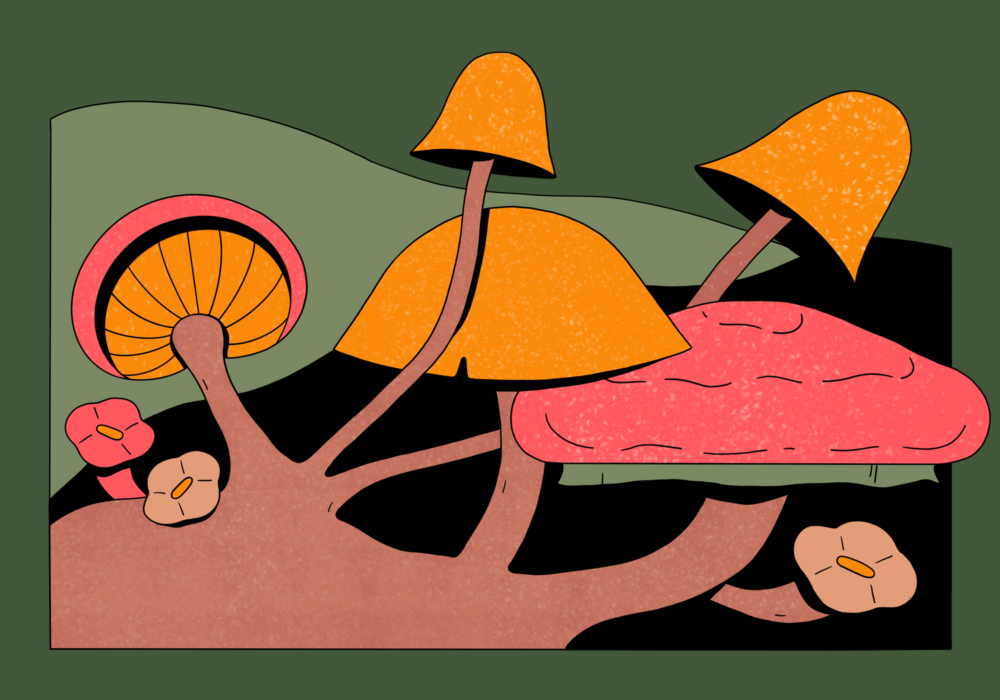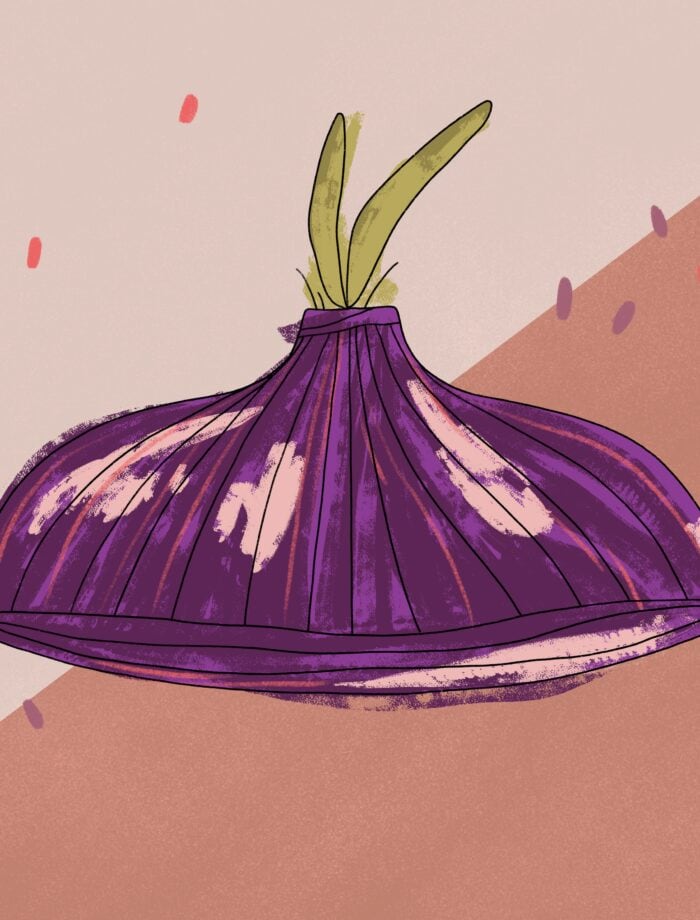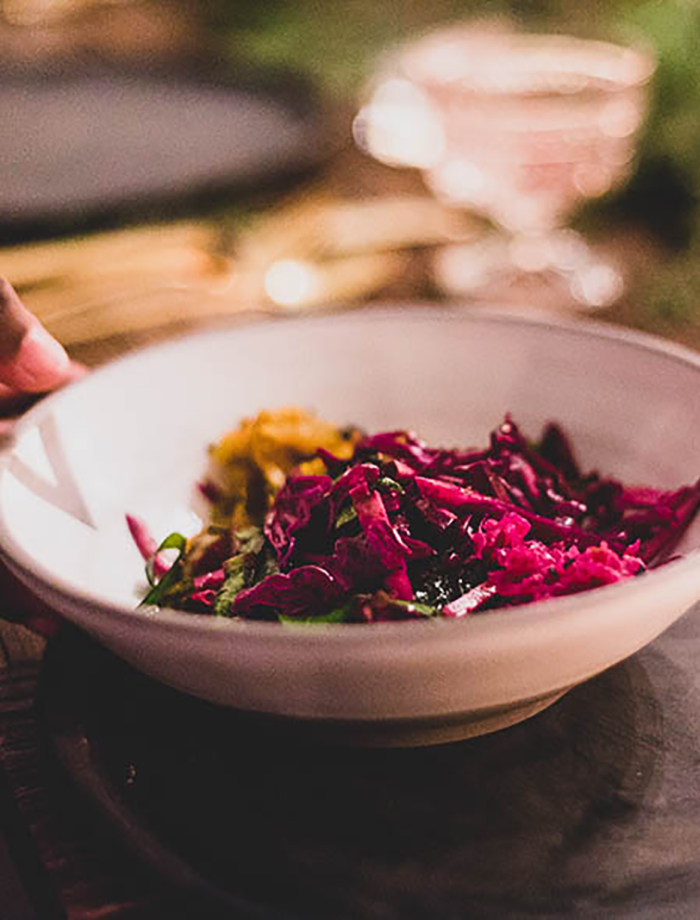Illustration by Hawnuh Lee
Close your eyes and imagine you are a matsutake mushroom. Rooted on the forest floor, your body extends deep within the soil. A diaphanous, threaded web winding its way through loamy earth. Your tendrils widen your senses far beyond your dome-capped stalk. They absorb nutrients, form symbiotic attachments to neighboring plants, and relay chemical messages that help maintain the health of the ecosystem. Fleshy and humble on the surface, underground you form a massive network pulsing with life.
Though they might not look it, fungi are more closely related to animals than any other kingdom. As research continues to reveal, we have much to learn from our evolutionary relatives. Fungi live everywhere on earth, from the air to the ocean to the soil. Underground, fungi grow long strands called hyphae. Mycelia are made up of bunches of hyphae, which are typically just a few micrometers in diameter each, but extend out millions of miles.
In Mycelium Running, mycologist Paul Stamets calls mycelia ‘the neurological network of nature.’ Much like how neurons in our brains branch to form thousands of simultaneous connections, mycelium stays in constant molecular communication with its environment.
“About 90 percent of all land plants exist in a symbiotic relationship with fungi, referred to as mycorrhiza. Plants can have several different fungal partners, and each mycelium can attach to several hosts. Biochemical signals are sent from organism to organism down these networked pathways, allowing the entire ecosystem to act as an interwoven and interdependent community.”
Writer and activist adrienne maree brown drew inspiration from the world of mycelia for her 2017 book Emergent Strategy, and has continued to embrace fungal wisdom in her writing since. In an essay she writes:
‘Mycelia growing underground actually bind the soil, which is made from the detritus of all that exists. Carrying necessary information along its network, mycelia help slow and stop the spread of dangerous toxins and preserve the fundamental life force of the forest. Similarly, by being mindful in our interdependence and communication, we can bind the chaotic content of our lives into a coherent and nourishing foundation for the world to grow. We can warn our communities of potential danger, and stop the spread of toxic behaviors and practices in our midst.’
From bioremediation to pharmaceuticals to regenerative agriculture, the fungal kingdom has countless applications in pursuing the prolonged health of our planet. Anthropologist Anna Lowenhaupt Tsing writes in her book The Mushroom at the End of the World:
‘Humans, too, have always been involved in multispecies world making. Fire was a tool for early humans not just to cook but also to burn the landscape, encouraging edible bulbs and grasses that attracted animals for hunting. Humans shape multispecies worlds when our living arrangements make room for other species. This is not just a matter of crops, livestock, and pets. Pines, with their associated fungal partners, often flourish in landscapes burned by humans; pines and fungi work together to take advantage of bright open spaces and exposed mineral soils. Humans, pines, and fungi make living arrangements simultaneously for themselves and for others: multispecies worlds.’
Step outside anywhere and you will be walking upon ‘vast sentient cellular membranes.’ As Stamets writes, ‘This fine web of cells courses through all habitats — like mycelial tsunamis.’ Stand rooted like a matsutake, and allow yourself to absorb the enormity of the collaborative ecological community you are a part of.
More mycological magic:
- Watch dancers embody underground mycelium networks — exploring themes of interweaving, communal energy, and interdependence in a film by choreographer Maxine Patronik
- Learn how to grow shiitake mushrooms in your backyard from the farmers at Zumwalt Acres
- Check out mycelial kitchenware made by Krystal Carle Mack
- Set your sights on psychedelic illustrations by Taehyoung Jeon
- Hunt for deer mushrooms with Alexis Nikole






